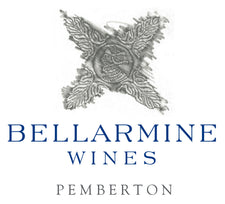Chardonnay
Chardonnay is grown widely throughout the world and has its home in the famed region of Burgundy in France. Here it is used to make both unoaked styles where the wines are made in stainless steel tanks as is the case for many of the wines from the famous northern Chablis area, as well as oaked styles famously made in the Côtes de Beaune which are the Beaune hillsides starting at the town of Beaune and heading south. Macon, a town further south again sees both unoaked and oaked styles produced and can provide some excellent value for money wines.
Chardonnay is dubbed the "winemaker's variety" as it is very malleable and can be "worked" by using techniques such as skin contact where the juice is left in contact with the skins prior to further processing, thus increasing the level of phenolics. This gives the wine more body and complexity. It can also be fermented in oak or in stainless steel. Oak contains lactones which add an oaky character to the wine reminiscent of pencil shavings and vanilla, and it also provides tannins which are astringent on the palate and provide more structure to the wine. Ageing can occur in oak or stainless steel. As the wine ages, it gains more oaky character and also has more exposure to micro oxidation - a process which further changes the wine chemically and gives more complexity and toasty notes.
A further commonly used tool is to stir the wine while it still sits on the lighter yeast lees which are purposely kept after the fermentation has finished. These dead yeast cells undergo autolysis where they break themselves down and this adds more character to the wine again adding complexity and a creamy mouthfeel. During this process, the wine is usually stirred once or twice a week to prevent hydrogen sulfide from forming that can occur when wine is left to sit on lees for an extended length of time.
Yet another tool at the disposal of the winemaker with Chardonnay is allowing or encouraging malo-lactic fermentation in the wine. This is a secondary fermentation of bacteria rather than yeast and it converts the malic acid to lactic acid which is a softer acid thereby reducing the acidity in the wine and also adding a buttery component.
The Napa Valley in California is home to the full bodied oaky buttery styles that once were more popular back in the days when Australia also produced many heavier styles of this wine.
Now in Australia the lightly oaked style is the most popular and is the style that Bellarmine has always made. This style is versatile as it is medium rather than heavy bodied making it a perfect accompaniment to many dishes such as roast chicken.
In making Bellarmine Chardonnay, this medium style has always been our goal so only a small portion of the juice goes into oak and only for a few months. Both the oaked and tank portions undergo lees stirring for a few months as well, with tasting each week to determine when the wine should be allowed to settle and then removed from the lees. The fruit from the vineyard shows a depth and minerality and we balance the oak to the fruit and acid making an enjoyable drinkable Chardonnay ideal with many seafood dishes.
